Your guide to a healthy & sustainable workplace
Welcome back to your smart building, designed to make sure you are comfortable and productive, whilst taking care of our environment. Let us show you around your healthy, low carbon workplace.

Cycling made easy
By cycling to work you can become fitter, save money and reduce pollution. Our end of trip facilities make it easy with bike storage and convenient amenities everyday.



Start your day healthy and sustainably!
Did you know that takeaway coffee cups are lined with plastic? This can be harmful to human health as the chemicals can leak into the beverage when heated. This also means they cannot be easily recycled. Yet Australians use 2.7 billion takeaway coffee cups each year! That's the equivalent of circling the earth twice - every year! Coffee cups can take hundreds of years to break down in landfill - which harms human and wildlife health.
Not recycleable!
Here's 4 tips to curb your takeaway coffee cup habit:
1 - Don't use a takeaway cup! Take a seat and enjoy your drink at the café from a ceramic cup. Fact: it takes an average of 5-10 minutes to consume your beverage.
2 - Bring your own cup. Guess what? You will probably get a discount! And, this doesn't even need to be a 'keep cup', you can simply grab a mug from the office cupboard and take it to your favourite café. Now that's innovative!
3 - Support sustainable responsible cafes that promote a circular economy with reusable mugs.
4 - If none of the above options are suitable, say NO to the lid of your takeaway cup. And remember steps 1, 2 and 3 next time!

Work at your best
Did you know that sitting puts more pressure on your lower back than standing does? Sitting for long periods of time is also linked with obesity, diabetes, heart disease, poor posture, muscle imbalances, and back and neck pain. You don't want that! Luckily there is an easy solution - alternate between sitting and standing throughout the day. Research also shows that getting plenty of daylight and desk plants helps you work at your best! After all, you spend approximately 2,000 hours a year at your desk - that’s over 83 days!
Here's 3 tips to help you work at your best:
1. Set a reminder to stand for 15 minutes each hour.
2. Take a short stroll of at least 2 minutes every hour to reduce your risk of health problems.
3. Aim to get at least 2 hours of standing/light exercise (walking) throughout your walk-day (pun intended!). Why not swap our meeting rooms for walking meetings!

Finely tuned building
Your smart building team fine tune the building 24/7 to make sure you are comfortable all year round, whilst looking after our environment. Your team works constantly to optimise energy and water consumption to look after our planet for future generations.

Reducing emissions
Investa has set a target to be net zero in their scope 1 and scope 2 emissions by 2025. This will be achieved through electrification, renewable energy and offsetting any residual carbon through GreenFleet. All developments will be carbon neutral from 2030.

Waste
Your building team is working hard to reduce waste and improve recyclables. Standard waste streams include food organics, mixed recycling, landfill, paper and cardboard and secure paper. Additional waste streams include coffee cups, bathroom paper towel, container deposit scheme and e-waste.
Did you know that contamination must be kept to less than 5% otherwise all waste goes to landfill? And, putting your rubbish in the wrong bin causes contamination. Investa has a goal to divert 70% of waste from landfill and currently diverts about half that (12% cardboard, 9% paper, 5% recycling, 5% organics, 5% mixed recycling). Nobody wants to be the person who puts their rubbish in the wrong bin! Your building team has equipped your waste streams with appropriate signage to show you what waste can and cannot go in each stream. Lets work together to achieve our goals!

Walking meetings
When the 3.30 low hits, instead of reaching for the Tim Tams, hit the street for
a walking meeting.
Nothing like a brisk walk round the block to reset the old grey matter.
Encourage your colleagues to
join you. A little walk can reduce chronic disease, improve creativity, and
increase
productivity.
Click here for a
few suggested strolls in your area

Power off
Did you know that a large portion of workplace energy is consumed after you’ve gone home? Leaving computers and devices on standby overnight not only uses energy, but creates heat, which the building must then cool to keep you comfortable. When you head home for the day, could you turn off your screen, PC, printer and lights?

Your building ratings
Your building works hard all day and night to run efficiently, making sure you can enjoy a comfortable workplace, whilst looking after our planet. Every year we track our progress with NABERS star ratings. 6 Stars is the highest rating achievable.
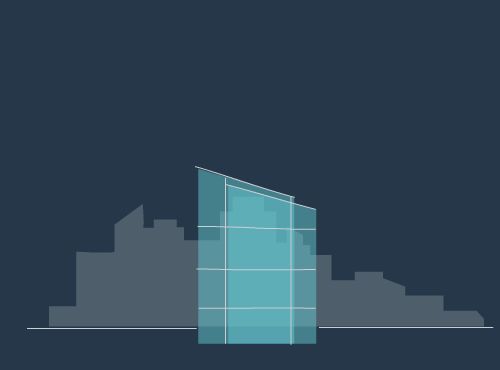

Your guide to a healthy & sustainable workplace
Welcome back to your smart building, designed to make sure you are comfortable and productive, whilst taking care of our environment. Let us show you around your healthy, low carbon workplace.
Cycling made easy
By cycling to work you can become fitter, save money and reduce pollution. Our end of trip facilities make it easy with bike storage and convenient amenities everyday.


Start your day healthy and sustainably!
Did you know that takeaway coffee cups are lined with plastic? This can be harmful to human health as the chemicals can leak into the beverage when heated. This also means they cannot be easily recycled. Yet Australians use 2.7 billion takeaway coffee cups each year! That's the equivalent of circling the earth twice - every year! Coffee cups can take hundreds of years to break down in landfill - which harms human and wildlife health.

Not recycleable!
Here's 4 tips to curb your takeaway coffee cup habit:
1 - Don't use a takeaway cup! Take a seat and enjoy your drink at the café from a ceramic cup. Fact: it takes an average of 5-10 minutes to consume your beverage.
2 - Bring your own cup. Guess what? You will probably get a discount! And, this doesn't even need to be a 'keep cup', you can simply grab a mug from the office cupboard and take it to your favourite café. Now that's innovative!
3 - Support sustainable responsible cafes that promote a circular economy with reusable mugs.
4 - If none of the above options are suitable, say NO to the lid of your takeaway cup. And remember steps 1, 2 and 3 next time!
Work at your best
Did you know that sitting puts more pressure on your lower back than standing does? Sitting for long periods of time is also linked with obesity, diabetes, heart disease, poor posture, muscle imbalances, and back and neck pain. You don't want that! Luckily there is an easy solution - alternate between sitting and standing throughout the day. Research also shows that getting plenty of daylight and desk plants helps you work at your best! After all, you spend approximately 2,000 hours a year at your desk - that’s over 83 days!
Here's 3 tips to help you work at your best:
1. Set a reminder to stand for 15 minutes each hour.
2. Take a short stroll of at least 2 minutes every hour to reduce your risk of health problems.
3. Aim to get at least 2 hours of standing/light exercise (walking) throughout your walk-day (pun intended!). Why not swap our meeting rooms for walking meetings!

Finely tuned building
Your smart building team fine tune the building 24/7 to make sure you are comfortable all year round, whilst looking after our environment. Your team works constantly to optimise energy and water consumption to look after our planet for future generations.

Reducing emissions
Investa has set a target to be net zero in their scope 1 and scope 2 emissions by 2025. This will be achieved through electrification, renewable energy and offsetting any residual carbon through GreenFleet. All developments will be carbon neutral from 2030.
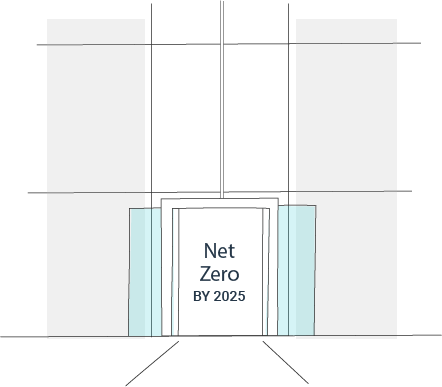
Waste
Your building team is working hard to reduce waste and improve recyclables. Standard waste streams include food organics, mixed recycling, landfill, paper and cardboard and secure paper. Additional waste streams include coffee cups, bathroom paper towel, container deposit scheme and e-waste.
Did you know that contamination must be kept to less than 5% otherwise all waste goes to landfill? And, putting your rubbish in the wrong bin causes contamination. Investa has a goal to divert 70% of waste from landfill and currently diverts about half that (12% cardboard, 9% paper, 5% recycling, 5% organics, 5% mixed recycling). Nobody wants to be the person who puts their rubbish in the wrong bin! Your building team has equipped your waste streams with appropriate signage to show you what waste can and cannot go in each stream. Lets work together to achieve our goals!
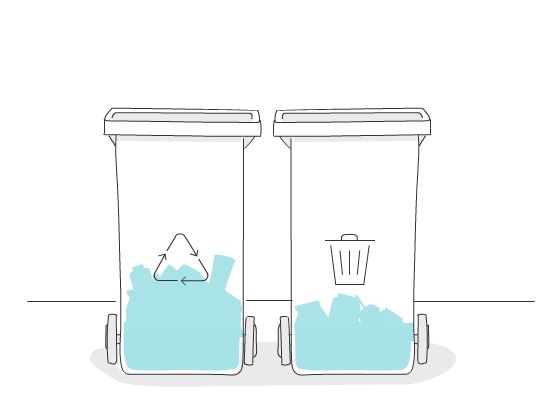
Walking meetings
When the 3.30 low hits, instead of reaching for the Tim Tams, hit the street for
a walking meeting.
Nothing like a brisk walk round the block to reset the old grey matter.
Encourage your colleagues to
join you. A little walk can reduce chronic disease, improve creativity, and
increase
productivity.
Click here for a
few suggested strolls in your area

Power off
Did you know that a large portion of workplace energy is consumed after you’ve gone home? Leaving computers and devices on standby overnight not only uses energy, but creates heat, which the building must then cool to keep you comfortable. When you head home for the day, could you turn off your screen, PC, printer and lights?

Your building ratings
Your building works hard all day and night to run efficiently, making sure you can enjoy a comfortable workplace, whilst looking after our planet. Every year we track our progress with NABERS star ratings. 6 Stars is the highest rating achievable.
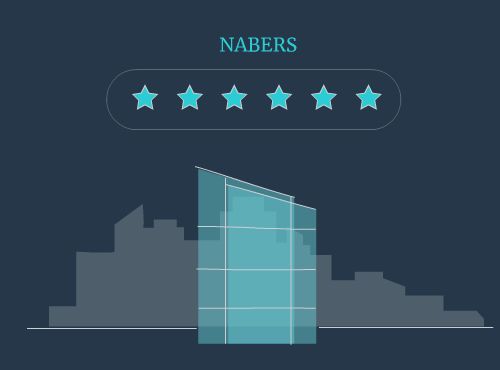
Your Productivity
Reports from the World Green Building Council confirm that well-designed interior office space can have substantial positive impacts on the health, well-being and performance of employees. We all know that when we sit in a stuffy room, with poor air flow, no windows, or it's too hot/too cold, we are less productive

Intuitively, we know sitting near a window with fresh air at a comfortable temperature brings us clarity of mind and high productivity. We describe these attributes as Indoor Environment Quality or IAQ. Estimates of performance losses from poor indoor air quality for all buildings suggest a 2-4% loss on average.
IAQ describes the condition of your workplace that contributes to your comfort and well-being. Elements like air quality, lighting, thermal conditions, and ergonomics all affect your comfort levels.
For example, your building team work hard to balance the smart systems which deliver comfortable temperatures and fresh air. Temperatures are set to a range of 22-24°, with 10% of fresh air to maintain healthy air quality. Harvard business review shows that good ventilation has been shown to reduce sick building syndrome symptoms (which costs between $10-$70 billion each year in the U.S.), cut absenteeism, and even reduce infectious disease transmission.
Want to know more about what you can do to improve your comfort and well-being at work?
Top Tips for being at your best

Look after yourself first and get enough rest! The research tells us we need 7-9 hours' sleep each night. The office can positively impact mood, sleep, stress levels and psychosocial well-being.

Take regular breaks. Perhaps take a spin around the block and get some fresh air and sunshine. We know that standing is the new sitting, and walking is even better! So take the opportunity to host a walking meeting - you will be surprised how efficient a short walking meeting can be! Plus, you'll get those endorphins going so everybody will feel better!

Stay hydrated. We are all meant to consume at least 2Lts of water every day. Keep a jug at your desk, or use the excuse to get up and stretch the legs every 45mins and refill your glass.

Keep plants at your desk. The benefits are both physical and psychological. Plants can offer visual relief, reducing stress, improving the overall impression of a workplace. Of course, they also improve the air quality by removing carbon dioxide in the air.

Make smart meal choices. Studies tell us that our food choices effect our overall cognitive ability. We all know that 3.30pm decline post pasta feeling! We also know that we need to feed the brain to stay focused, which is why it's hard to focus on an empty stomach. Keep healthy snack choices at your desk, opt for an herbal tea once in a while, and decide what you're having for lunch before you leave your desk!
Workplace Well-being
Beyond the choices you can make to improve well-being, your office can also improve your clarity of mind at work. Careful design of the office can improve employee mood and morale. A well-being workplace can be designed to mitigate stress and optimise productivity.

Elements such as art, vegetation, variable work spaces, dynamic furniture (such as sit-stand desks) can enable improved productivity by tailoring the workspace to the task. For example, quiet spaces for dedicated thinking and problem solving, or communal areas for collaboration.
Office spaces are evolving rapidly in response to remote work, technology advancements and the need to innovate. Open plan layouts have been adopted as best practice in workplace design. Activity Based Working (ABW) has become common place, and requires a variety of spaces for the employee to select from, depending on task variability. ABW can enable better collaboration, spontaneous meetings, and ultimately increased productivity. It’s also important to recognise that it doesn’t work for everyone or every role, and the jury is still out on its ultimate longevity.
Critical elements of a productive and healthy workplace

Special comfort and individual space

Visual Comfort

Indoor Air Quality and Thermal Comfort

Personal Control and Building Image

Noise Distraction and Privacy

Overall Satisfaction
More Information
For more information on the way your workplace affects your productivity, have a look at the following international studies.
Your Amenities
Your productivity can be improved by getting outside during the day. Not only does getting outside break up the day, but also a quick walk around the block can refresh and improve clarity of mind.
Your building is located centrally, with access to parks, gyms, public transport, pools, and hosts End of Trip Facilities.
The map below illustrates where your most convenient amenities are located. In addition to public amenities, the map also illustrates routes for walking meetings, or a lunchtime run.

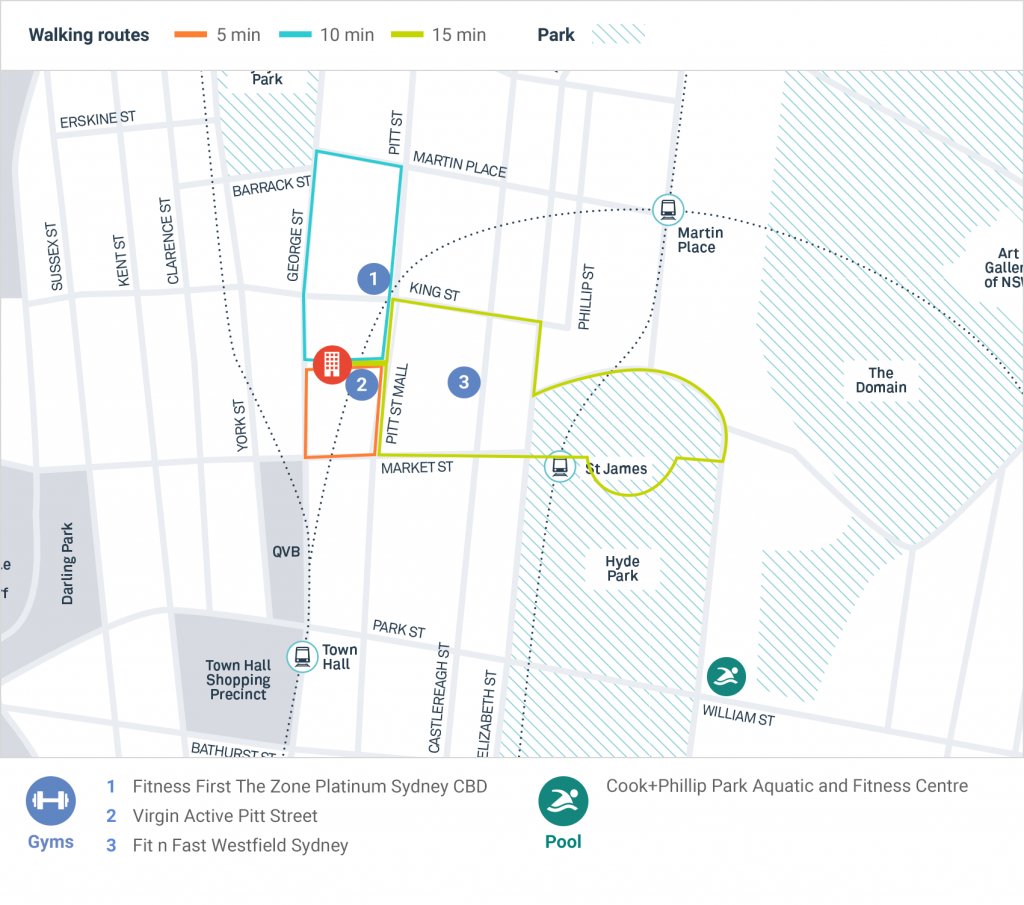
Your Fitout
The way we work is changing as technology offers more flexibility. We no longer work in enclosed cubicles, and rarely find a use for a fax machine. Beyond technological enablers, the design of our work space has morphed into open plan, flexible spaces, abundant with greenery.
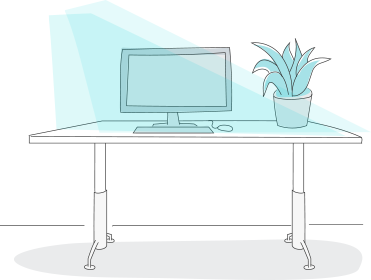
When designing your fit out, there is a lot to think about. Starting with the basic practicalities of accommodating your team’s functional needs, to considering amenities, space planning, furniture and material selections, and most importantly, selecting the right coffee machine. Beyond the design, you might also think about the environmental aspiration of your fit out, to maximize recycled content, avoid landfill and reduce toxins.
Before you put pen to paper, consider the following benefits of a best practice fit out.
Corporate social responsibility starts at 'home', by using your workplaces as a practical demonstration you can showcase an innovative, responsible, future proof environment to clients and employees!
Employees know their wellbeing at work affects not only their productivity, but their
workplace
satisfaction and enjoyment. We know that staff are more likely to stay at workplaces
where they are
happy.
Likewise, organisations' environmental and social responsibility reputations are
being examined more
closely than ever as a new generation of staff want to choose employers whose values
align with their
own. What better way to showcase your environmental credentials than on your own
home turf?
Workplace design influences the way staff share and develop knowledge. What better way to encourage an open, flexible and creative workforce than through an open, flexible and creative workplace? The research says informal interaction improves organisational learning, a crucial component of business success and productivity.
Energy costs money. Water costs money. Sending waste to landfill costs money. Resource efficient design can reduce costs for your business, allowing you to spend money where it counts. By getting it right the first time, you can reduce your on-going lease costs associated with relocation.
Four step process
When moving into a new office there are lots of things that you need to be thinking about simultaneously. Your Investa Property Management Team is here to walk you through the process and ensure that you’re able to design and build a healthy low carbon office.
We’ve identified the following four easy steps to get you set on that pathway.
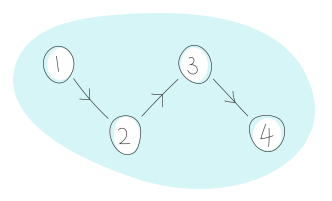
These can be for both environmental and wellbeing performance and can include
items such as;
Embodied carbon is a lifecycle assessment charting the total
environmental impact
of that office desk from the moment it is a tree, all the way to the end of its
lifecycle when it
will (hopefully) be recycled. Reducing the embodied carbon of your office fit
out reduces the total
environmental impact of your workspace.
Recycled and recyclable content is the content in your office
that has either been
recycled from something else, or can be recycled when you’re done with it. You’d
be surprised how
much can be made of old office furniture, with the high timber, plastic and
paper contents lending
themselves to common recycling practices.
Reused content is the content you’re able to reuse from both
your previous
workplace and the previous occupants of the space you’re able to move into.
Reusing existing
furniture is not only great for the environment, but it also reduces the
significant cost of buying
brand new items.
Operating carbon is the operational impact of running your
office. The more energy
and water efficient your fixtures, the more you’ll save on utility bills. And
not only will you be
saving energy and water, but you’ll be reducing the associated carbon of running
your office.
Achieving environmental ratings. Ratings make tangible the
great work done when
designing and building your office. This lets you easily communicate the
benefits of working in your
office to existing and future staff. Engaging your teams on setting the targets
is also a great way
to drive employee ownership of your new space.
It's important to have your design team involved from the very beginning so they can tailor the project to meet your expectations.
Moving workplaces can be hard for employees, especially with the evolving way of working meaning that changing addresses means a lot more than just changing desks. Keeping employees involved in the process is crucial to ensure a smooth transition to your new office and reduce disruption to your business.
Once you are in and settled, check back in with your target, and report your
scores to your teams.
Conduct some initial surveys to see how staff are adjusting to the new space.
See what’s working,
and what’s not.
Make adjustments where things aren’t working as you’d imagined.
Moving to your new office
Reusing Existing Office Fit Out
This starts at the very beginning, when you’re still at your current, soon to be old home. When moving out of your existing office tenancy it’s important to try and reuse whatever you can. All office materials, from the lights and carpets to every last work station often end up in landfill. Let’s do what we can to reduce that!
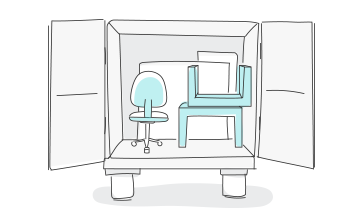
Ask your existing building manager if it’s possible to leave fixtures and furnishings in good condition so that they can be reused or repurposed by the future tenants. Not only will this reduce costs for both of you, but it will reduce the environmental impact of your move.
If neither you nor your old builder want it, there are plenty of charities, NGOs and start-ups who would gladly take some old office equipment off your hands. A helpful way to start this process is to create an inventory of the items that would otherwise go to landfill.
Once you’ve created the inventory, contact your existing building management team to see if they have a fit out reallocation programme, or contact a charity you support to offer them the items, or failing those two options, distribute the items amongst staff. You’d be surprised how even a small amount of old office furniture can make a big difference.
The Better Buildings Partnership's Strip-out Waste Guidelines provide more detail on this. Once you’ve put your old home behind you, it’s time to start working on what the new one will look like.
Before demolishing the old asset at 151 Clarence St in Sydney, the Investa Property Team were able to recycle and repurpose over 9 tons of office furniture. A lot of this went to the Butterfly Foundation, a charity providing health and education support programs for Australians with eating disorders. More desks and chairs meant they could continue to provide support, treatment, prevention, early intervention, education and training for young Australians in school and their families.
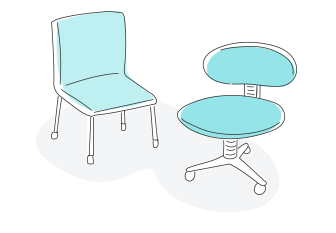
Your Office Rating Tools
There is a suite of ratings tools which you can use to measure the health, efficiency and environmental credentials of your new office. These tools can assist you in setting best practice targets, and provide a simple framework to cover all the bases.

Green Star workplace (formerly known as ‘Green Star Office Interiors’) is the
Green Building
Council of Australia’s (GBCA’s) nationally recognised standard that assesses an
office interior on
all key areas of environmental performance.
Green Star interiors rates the capability of the office design to reduce
environmental impact,
rather than its actual performance in operation. The Green Star Office Interiors
tool is easy to use
and can be downloaded from the GBCA’s website.
A Green Star workplace rating can be used to demonstrate leadership in the
design and construction
of your workspace. It will help ensure your office is a comfortable, productive
and healthy place
for staff to work. The rating can also help you to minimise ongoing costs such
as energy and water
bills.
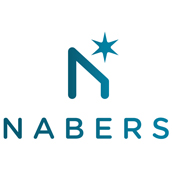
Much like your building has a NABERS rating which measures the buildings energy
efficiency for
shared services like lifts and air conditioning, you can also have your tenancy
rated for energy
efficiency. A NABERS tenancy rating will enable you to measure and rate your
energy usage and the
associated greenhouse emissions from your office. This rating tool is a terrific
way to communicate
a score card on performance to your teams at work.
If you decide to rate your new fit out prior to the construction stage, you
can begin to
advertise your targeted rating straight away, showcasing your environmental
commitments to employees
when moving locations. For more information on NABERS you can visit the NABERS
website. Alternatively, this NABERS Energy Management Guide for Tenants - Google Search is also pretty
handy. As always, your Investa Property Management Teams are always there to
provide support in
achieving
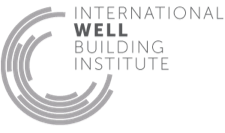
The International Well Building Institute, established in the USA, has developed a tool to guide the design of work places which have a positive impact on the tenants (that’s you!) health and well-being. The tool outlines seven key criteria for consideration in designing your new workplace; Air, Nourishment, Water, Light, Fitness, Comfort and each of the seven features must be considered to achieve certification. Your Investa Property Team can assist you in achieving a WELL certification for your new office.
Designing your new office
Your Lighting
The lighting in your new office will account for more than 50% of your energy costs and represents the largest single opportunity for energy savings.
If you've chosen an office space with lots of natural light, you’re already ahead, good job by you! And even if you didn’t, there are still significant savings to be had.
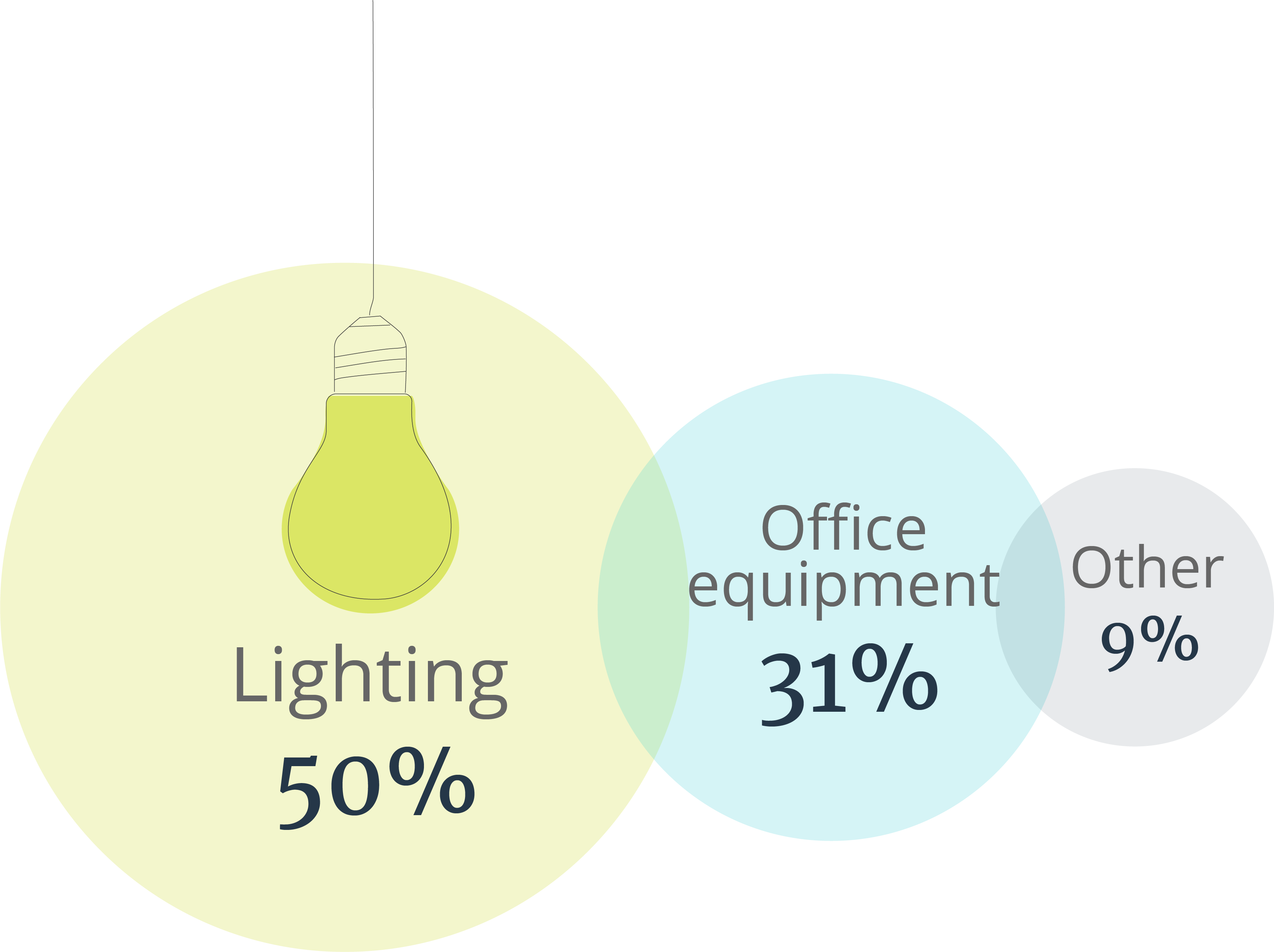
The Technical Specifications section of the Tenant Information Manual showcase Investa's recommended best practice lighting showcase Investa’s recommended best practice lighting. This includes the inclusion of control lights with motion based sensors and the placement of light sensors near windows. Even something as simple as painting your office walls and ceilings a light colour can reduce the demand placed on lighting and lead to associated cost savings.
Our friends at CitySwitch have produced a great overview of energy efficient lighting and are also able to help you make the right choices from day one.
Beyond the office lighting, don’t forget to turn off monitors, printers, PC’s and coffee machines when they’re not in use. These elements can create heat, which the building needs to cool overnight to ensure it’s comfortable for you when you arrive in the morning.
Your floors
Over the life of an average office building, floor finishes have the greatest single environmental impact of any fixed item. This is because they tend to be replaced at the end of every lease cycle.

We’d love for you to be able to keep the existing floor finishes within your tenancy, but if this isn’t possible (or if they’re really, really ugly), there are lots of environmentally friendly options available at similar and often cheaper costs than standard alternatives.
When considering what carpets to use, look for;
- Modular carpets (like tiles), which are easier to repair and replace and result in less waste
- High recycled content
- Minimise virgin (non-recycled) PVC content
- Enquire if there is a lease option or manufacturer take-back program
- Minimise use of pesticides and fire retardants
- Measures in place to reduce ecological impact of manufacturing process.
Your walls and ceilings
Work places have changed since the days of the 1950’s offices and secretary pools, and thank goodness! More and more of us work in open plan offices, making it easier to talk to colleagues, and spontaneously collaborate.
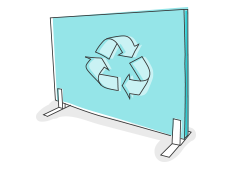
Fewer walls also mean reduced fit out expense, more natural light and more effective air conditioning and lighting which results in direct financial savings.
If you do choose to put in some new partition walls and ceilings, we ask that they be modular with re-useable elements, composed of a high-recycled, eco-preferable content. Likewise, all wall linings and glazing frames used should have a high recycled content.
Lastly, as per the Sustainability section of the Tenant Information Manual, we ask that you please leave enough room for return air grilles in your walls so that return air from the HVAC system can move through the space efficiently. This ensures that you remain comfortable all year round.
Your joinery
In designing your fit out, you may have identified existing doors, built-in joinery and kitchens you can retain. This is a terrific way to reduce both cost, and environmental impact of your fit out.
If you do require new joinery, then we encourage you to use recycled, FSC-certified, plantation or any other low emissions composite timbers. Otherwise, you run the risk of using old growth timber from a rainforest, the logging of which usually results in a severe loss of Australian biodiversity. Not cool.
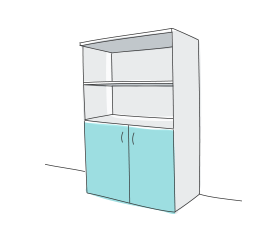
These old timbers often contain formaldehyde and other volatile organic compounds (VOCs). That’s bad. Exposure to VOCs has been linked to a range of health problems including headaches, fatigue, respiratory problems and skin irritations.
So using certified sustainable timbers, as well as low emissions laminates, finishes and glues allows us to create a healthier indoor environment for your employees.
Your Paints, sealants and adhesives
Thankfully all those funky colors (and all those boring shades of ‘off white’) come in low VOC (Volatile Organic Compounds) options.
So, when choosing paints for your office, make sure they are low VOC - your staff will thank you for using environmentally sustainable options, that don't have that toxic "new paint" stench.
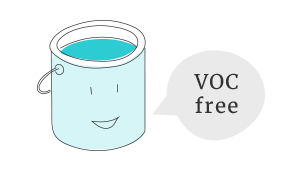
Your Bathrooms and toilets
If you get to design new bathrooms for your new tenancy (fun!), then installing efficient fittings and fixtures won’t cost you a single extra dime.
In fact, water efficient design will only save you money on your water bills over the course of your lease. Alternatively, if you’re upgrading existing bathrooms, there are some very cost-effective things you can do to reduce your water use. Or – as is usually the easiest option – it’s also great to do nothing and keep the existing tenancy bathrooms!
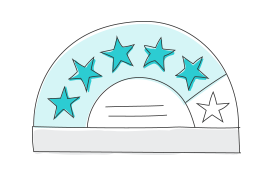
The Australian Government has put together some useful resources on water efficient design, with their creatively named Water Efficiency Labelling and Standards (WELS) scheme providing an outlet to showcase your great work!
Your Supplementary air conditioning
If your office needs supplementary air conditioning for server rooms or otherwise, it’s important to choose the most energy-efficient system. We’d recommend basing your choice on cost over the life of your lease in preference to upfront cost.
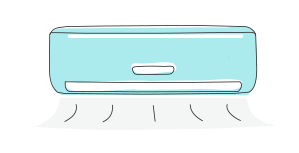
Since air conditioning is a major contributor to peak demand for energy it can contribute disproportionately to energy bills by creating high peak ‘capacity charges’ which, even though they’re only short events, can add to electricity bills.
Efficient management can have a great impact too, with proper maintenance and usage able to reduce energy consumption by up to 50%.
As per your Tenant Information Manual, installing supplementary air conditioning specified for maximum efficiency and arranging for regular maintenance and annual reviews of set points and timers will ensure these important goals are met.
It’s important to size the system correctly according to your needs and the existing base building system. If your air conditioner is too big it will cycle on and off more, reducing efficiency and creating greater temperature fluctuations. That’s bad. This also causes parts to wear out more quickly. That’s also bad. Let’s make sure we get this right.
Lastly, if your supplementary air conditioning unit is water sourced and connected to the base building systems, you’ll have to install and program a solenoid valve to ensure the water flow is stopped when the compressor is cycled off. This will save a bunch of water and energy when your air conditioning unit is turned off and we no longer have to run power to the unit.
Choosing Your Furniture
Workstations and office furniture
Keeping existing workstations and office furniture is the cheapest, most environmentally smart, and quickest way to fit out your office. If that isn’t an option, or if the existing furniture looks like it belongs in a terrible late 90s sitcom, we’d love to see you fill your home office with cost-effective, environmentally friendly and healthy (no or low-VOC toxin) products.

In terms of a Cradle to Grave consideration, the best workstations are those which are designed for easy disassembly, reuse and recycling. So not only can you reconfigure your working set up if you don’t like the person you’re sitting near, but you – or someone else – can easily reuse the furniture when it’s time to say goodbye. This helps reduce the ‘churn’ of old office furniture constantly being sent to landfill, which will reduce waste bills whilst helping the environment.
When considering what workstations and furniture to invest in, we’d love you to consider the following;
- Design and fabrication that minimises materials use and waste and focuses on natural and renewable materials as well as recycled and recyclable content
- The proportion of recycled, FSC-certified or plantation timber
- Design for easy disassembly and reconfiguring (this will also help us reuse and repurpose everything at the end of your lease!)
- Manufacturer take-back scheme
- High durability to avoid costly repair and replacement
- No or low-VOC glues and solvents (including those used in MDF/ply)
- Measures in place to reduce ecological impact of manufacturing process
Smart office equipment
Office equipment accounts for approximately one third of the average tenancy’s energy use, with most of this attributed to computers and monitors. Buying your staff fancy, high-efficiency tech is only half the battle, with energy being used in an empty office by computers and screens which have not been turned off overnight an easy first step to take.

This is just one small choice you can make everyday to reduce the financial and environmental cost of your tenancy. All data centre equipment, computers, monitors and everything else is rated by the Australian Government for energy efficiency, with the star rating on an asset indicative of its energy efficiency.
When your equipment is being delivered and set up, ensure energy efficient settings are selected, and ask your supplier to demonstrate how to use the best power management settings. Significant energy savings can be achieved just by having everything running in the right mode. Be sure to let staff know too, it’s amazing how much sustainable preaching people will tolerate when they’re about to be handed a shiny new laptop!
CitySwitch's energy efficient office equipment library is bursting with resources that can help you reduce the operating cost and environmental impact of running your office, including a sample 'switch off' campaign for those who just like leaving things on overnight, or worse, over the weekend!
Office kitchen equipment
Let’s make sure the healthy food options in your staff kitchen are accompanied by a side of financially and environmentally responsible kitchen equipment. Whilst appliances with the best available star ratings for energy and water can sometimes be a little on the pricey side, even by choosing appliances with a rating no less than one star below the best available can result in significant savings.
You can compare the energy and water ratings of appliances available in Australia.
Indoor plants
The science tells us that indoor plants contribute positively to the wellbeing of building occupants by reducing airborne concentration of VOCs. They've also been shown to improve the indoor environment, relieve anxiety, reduce CO2 concentration, increase productivity and decrease respiratory disorders.

Potential Plant Pets for the Office
- Weeping Fig: suited to large open spaces and preferably high light levels.
- Peace Lily: grows well in low light, works well as underplanting beside Weeping Fig.
- Aglaonema or Silver King: variegated leaves, useful for adding accents, prefers high light levels.
- Kentia Palm: one of the best plants for removing harmful VOCs.
- Dracaena deremensis or Janet Craig: hardy, grows in low light, copes well with air conditioning.
For more information, and for those with too much time on their hands, ambius’s Ultimate Guide to Office Plants will answer every question you have, and even more you’d never have thought to ask.
For case studies that can give your business an insight into how others are approaching indoor plants, jump across to the Green Plants for Green Buildings website.
Purchasing office consumables
Demonstrate your organisation's commitment to corporate social responsibility by using your office purchasing power to select socially responsible products with low environmental impacts. Now more than ever, people are using less and less physical office products such as pens and highlighters. So, consider how many you may actually need given the technological advances available to us!

Buying from local suppliers is a great way to reduce transport costs and support the local community. Choose products that are recycled and recyclable. We know that recycled paper is the most sustainable paper option by using less energy and water, producing lower carbon emissions in the manufacturing process and reducing the amount of waste sent to landfill, as paper can be recycled 4-5 times. You won't even notice a difference in quality, with recycled paper being just as white as non-recycled paper.
The UK based Recycled Papers makes the case better than we could, showcasing the benefits of using recycled paper to employees, clients and other stakeholders who are easily exposed to this sustainable choice.
Caffeine, my old friend
Who doesn't love a good coffee or tea?! But sadly, coffee cups cannot be recycled in traditional recycling facilities. This is because of the plastic lining on the inside of the takeaway cup, which is also harmful to human health.

Nobody wants to contribute towards the 2.7 billion takeaway coffee cups that go to landfill each year!
Here's 4 tips to curb your takeaway coffee cup habit:
1. Don't use a takeaway cup! Take a seat and enjoy your drink at the café from a ceramic cup. Fact: it takes an average of 5-10 minutes to consume your beverage.
2. Bring your own cup. Guess what? You will probably get a discount! And, this doesn't even need to be a 'keep cup', you can simply grab a mug from the office cupboard and take it to your favourite café. Now that's innovative!
3. Support sustainable responsible cafes that promote a circular economy with reusable mugs.
4. If none of the above options are suitable, say NO to the lid of your takeaway cup. And promise us that you will remember steps 1, 2 and 3 next time!
Your Consumption
Through experience, research and technical expertise, 420 George Street is actively managed to operate at its optimum level, to make you comfortable and minimize associated environmental impacts.
The data below is the ‘base building use’ and represents the common building services as operated by Investa’s dedicated on site team. You can have a look at 420 George Street data below, represented as an intensity metric, calculated per square metre of building area allowing for year-on-year comparison. The yearly data displayed has been independently assured and verified in line with our Reporting Rules and covers the reporting period of April-March of a given year. The data is updated as soon as it has been assured.
To see how your building compares, take a look at our annual Sustainability Report.
We’re investigating ways we can collect the electricity data from your own office tenancies, the energy needed to run your lighting, computers, printers and everything else in your work place. With this data, we’ll be able to share our expertise with you to reduce your own environmental footprint.
Electricity
This covers the air conditioning and ventilation systems, the building’s lifts and all other plant equipment. By running these efficiently we’re reducing the environmental impact of your building.
Yearly electricity use
The scope 1 component of the data reported includes natural gas only for pre-FY21. The scope 1 component of the data reported includes natural gas, diesel and refrigerants for FY22. Historically, electricity associated emissions have been calculated using a location-based approach. In FY22, a market based approach has been adopted. Refer to the FY22 Environmental Reporting Rules forming part of the FY22 ESG Data Pack for further details.
Yearly electricity consumption in kWh/sqm
-
58.8 FY17
-
54 FY18
-
49.7 FY19
-
50.2 FY20
-
54.7 FY21
-
40.4 FY22
Your property management team work hard all year to have 420 George Street running at its most efficient, ultimately reducing costs and enhancing performance year on year.
Carbon emissions
The carbon emissions from 420 George Street come primarily from electricity, though gas usage and other fuels such as diesel account for small amounts.
For a full breakdown of emissions sources, have a look at Investa’s annual Sustainability Report .
Yearly carbon emissions
Investa added diesel and refrigerants to emissions reporting in FY22.
Yearly carbon emissions measured in kg.CO2/sqm
-
51.7 FY17
-
47.1 FY18
-
43.5 FY19
-
43 FY20
-
21.6 FY21
-
2 FY22

There was a 1.1% reduction in carbon emitted via building services between 2019 and 2020. That’s a reduction of -18320.5 kWh of carbon dioxide and is the equivalent of the emissions use of -1.2 Australian households. Your property management team are committed to reducing the environmental impact of 420 George Street in line with Investa’s net zero Carbon by 2040 target and continue to report the progress of the entire Investa portfolio annually here.
 - 1.2
- 1.2Your property management team are committed to reducing the environmental impact of 420 George Street in line with Investa's net zero carbon by 2025 target and continue to report the progress of the entire Investa portfolio annually here.
Water
Air conditioning and ventilation systems and bathroom/end of trip facilities use most of the water at 420 George Street. Water efficient design and ongoing management helps us control water consumption and reduce water waste.
Yearly water use
Yearly water use measured in L/sqm
-
633.1 FY17
-
590 FY18
-
586 FY19
-
573.8 FY20
-
411.3 FY21
-
311.4 FY22
As the asset has only been under Investa’s management for one year, we do not have historical data to compare it against. However, if you visit Investa’s Sustainability Report you can compare your asset’s performance against others in Investa’s national portfolio.
Gas
Gas is primarily used at 420 George Street to provide heating during the colder months of the year.
Yearly gas use
Yearly gas use measured in GJ/sqm
-
45.6 FY17
-
41.5 FY18
-
54.9 FY19
-
46.6 FY20
-
37.6 FY21
-
38.2 FY22
There was a 15% decrease in gas use between 2019 and 2020.
As the asset has only been under Investa’s management for one year, we do not have historical data to compare it against. However, if you visit Investa’s Sustainability Report you can compare your asset’s performance against others in Investa’s national portfolio.
Waste & recycling
In 2020-21, Australia generated approximately 75.8 mega tonnes (Mt) of total waste. That's the equivalent of 471 Sydney Opera Houses! The worst part is that this number continues to increase year on year and only 60% of this waste is recycled - meaning that 40% goes straight to landfill - we need to fix that!

Binder


How to play
Swipe right if it can be recycled, left if it goes to landfill and “I” for more
information! Be careful
though, you only have three chances to help Yellow bin find love, so you best
sharpen those recycling skills.

Guide to Binder
Because we love winning we’ve created a
guide
for you, so you can emerge victorious! We’ve also created
smaller versions of the guide
that you can print and hang around your office waste stations, so all
staff know what can and can’t
be recycled.
Top tips for reducing waste:

Use a re-useable coffee cup rather than a single use, disposable coffee cup when getting coffee or tea! If you forget your re-useable cup (nobody’s perfect) ask the café if they participate in a circular economy coffee mug program or even better - drink it at the café and enjoy the glorious 5 minutes to yourself! If you HAVE to use a takeaway cup, refuse the lid and once you're finished with the cup rinse it and put it in one of the 'Simply Cups' coffee cup waste stream.

When bringing your lunch from home make sure to use washable, re-useable Tupperware rather than plastic containers which you would otherwise throw out! Also, don't put your plastic container in the microwave as this is bad for human health!

Read the news online - it updates faster than printed 24 hour cycles!

Get yourself a washable, re-useable straw you can use again and again when sipping on your beverage of choice

Keep a set of cutlery in the bag that you can use over and over again so that you can say no to single-use cutlery!

Bring a water bottle! This will save you time and money and the environment, oceans, turtles, whales and dolphins will thank you! Did you know that 370 million Australian plastic water bottles end up in landfill every year? Don't be that person contributing to that disgraceful statistic!

Glad wrap - no, no, no. There really isn't much worse than glad wrap. Go and grab yourself some re-useable beeswax wraps that you can wrap leftovers in when you’re bringing food into work. Or, bring a takeaway container that you keep in your bag or office locker to keep leftovers!
For more helpful tips, and other ways you can reduce the amount of waste to landfill coming from your office, we’d love for you to check out the below links and let us know what you think!
Resources
There are a bunch of amazing resources online which can help you reduce the amount of waste you send to landfill. Here are a few of our favourites:

Our absolute favourite. The best, funniest way to learn what is and isn’t recyclable in your office!

CitySwitch’s guide to office waste
Some office specific, practical advice on how your business can implement a best-practice approach to waste and recycling.

PlanetArk’s Recycling Near You
A great online resource for hard to recycle materials like chemicals, batteries, medicines and tyres

Looking for re-useable items?
Biome has a wide range of products you can use to help reduce your contribution to Australia’s landfill

CitySwitch’s waste assessment tool
An easy to complete, DIY worksheet which our friends at CitySwitch can use to provide a tailored waste assessment report for your office

Some really fun games that simplify the waste problem for our children (or for our inner child!) courtesy of the ABC

Another PlanetArk resource with corporate specific waste and recycling opportunities
Due to their inner wax linings coffee cups aren’t recycling. Until now. Using new
technology,
Simply Cups
collect disposable coffee cups and recycle them into building supplies
and rCups, a new,
re-useable coffee cup.
We’ve begun piloting Simply Cups’ program at select
assets and have been able to
recycle over 45,000 disposable coffee cups in 5 months, enough to fill a whole
tram!
Following the success, we’re looking at implementing the programme across Investa’s wider portfolio. To find out more, and learn how your office can participate, please reach out to sustainability@investa.com.au .

Your Ratings
There is a suite of independent tools we use to rate your building. By using a third-party system, we’re able to see how your building is performing relative to other buildings in your city and throughout Australia.
We also use international tools to rate Investa’s collection of buildings (including 420 George Street) against our global peers. This allows us to demonstrate our global leadership and commitment to sustainable environmental performance.
NABERS ratings
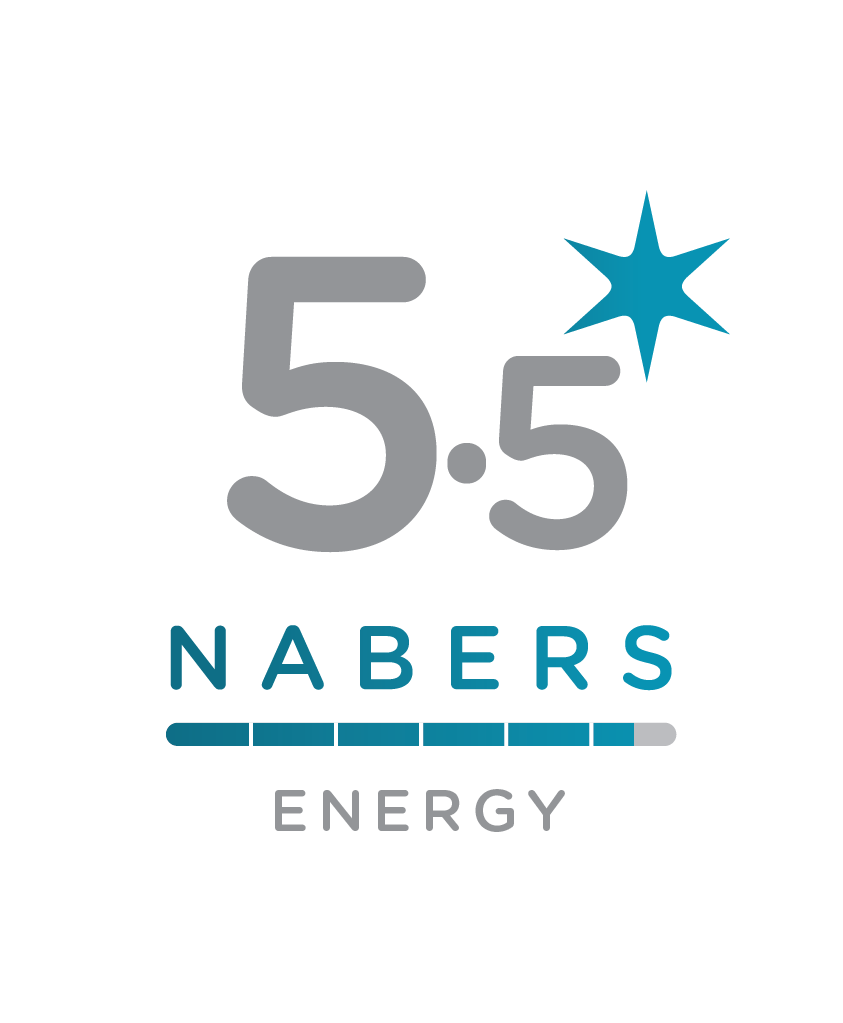
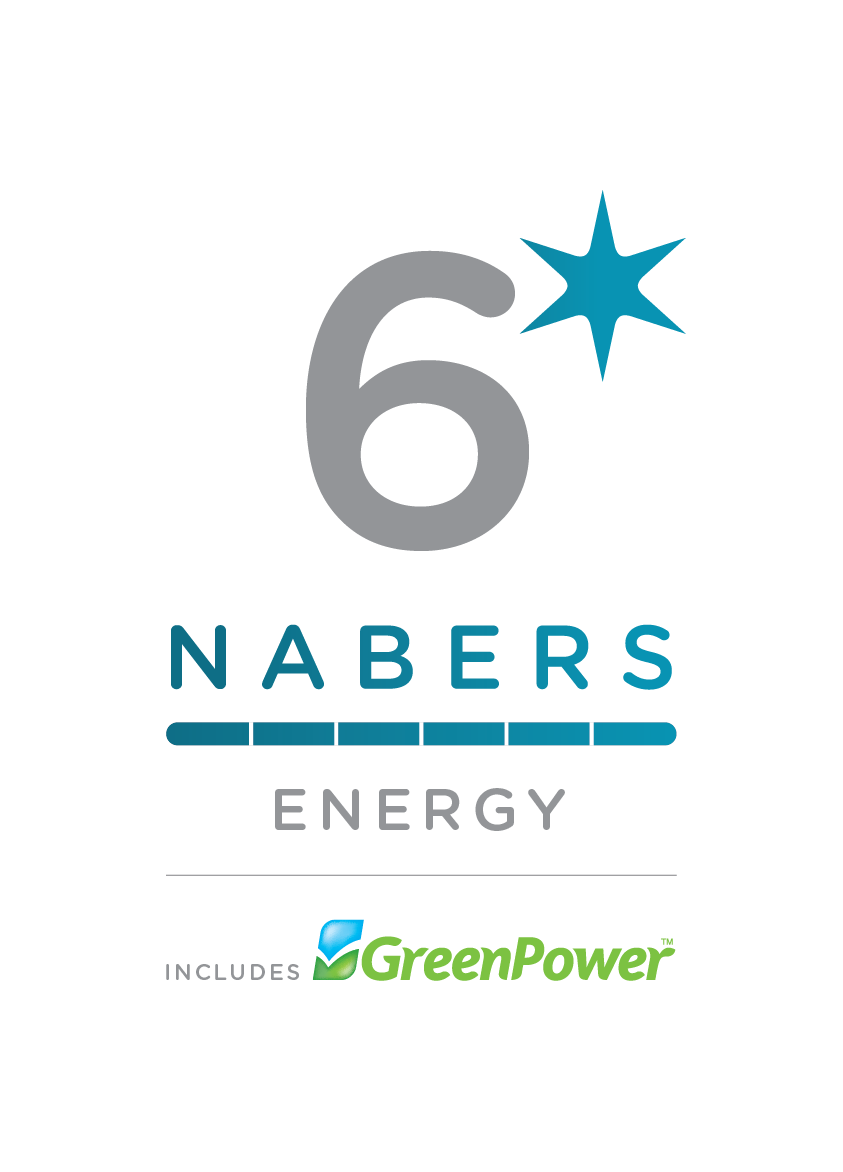
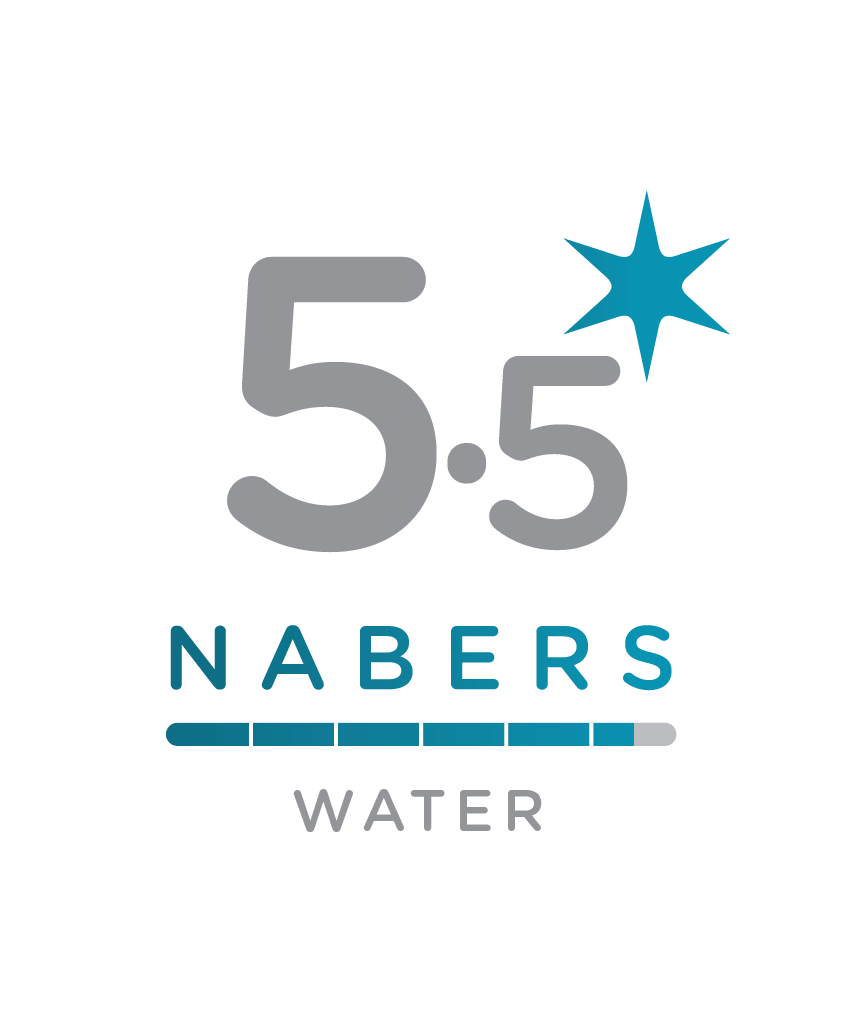
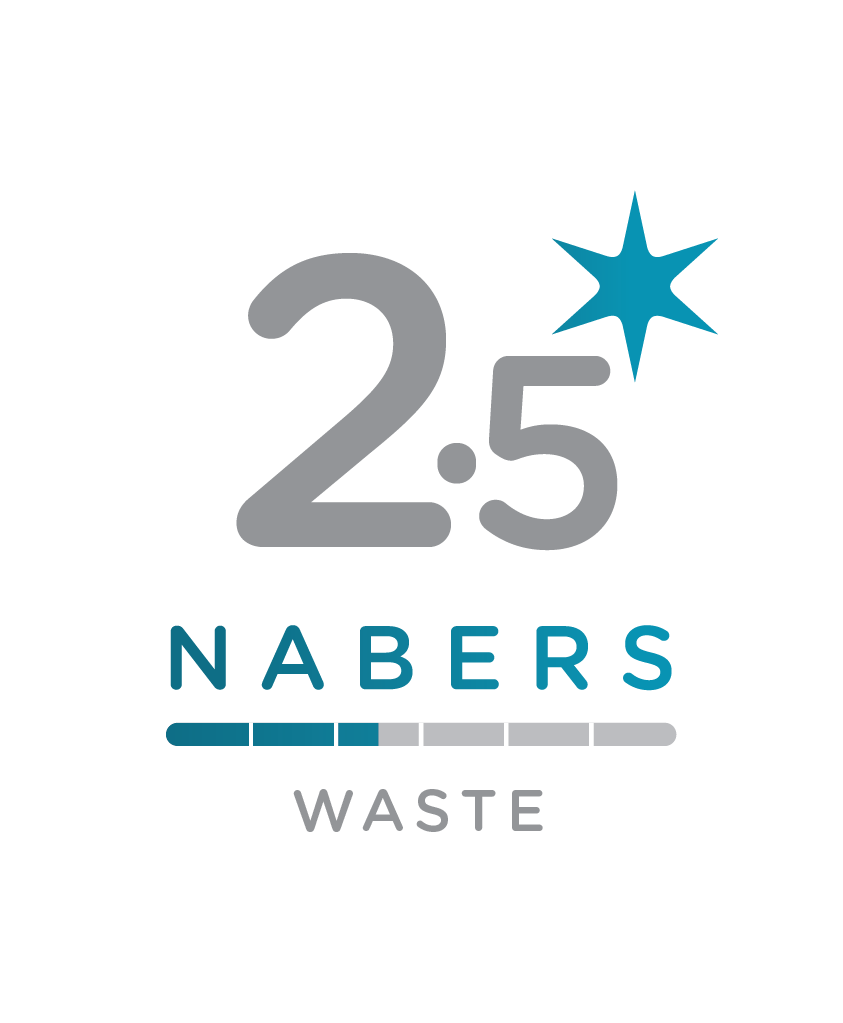
Since 2010, the Australian Government has required landlords of office space of 1,000 sqm or more to have an up-to-date Building Energy Efficiency Certificate (BEEC).
A key component of the BEEC rating tool are the National Australian Built Environment Rating System (NABERS) ratings for the building.
NABERS is an operational rating tool designed to give the public a comparable guide to the efficiency and sustainability of office spaces.
NABERS Energy and Water ratings measure the energy and water efficiency of buildings on a 0 (the worst) to 6 (the very best).
Your Building Management Team is committed to maintaining and improving the base building NABERS Rating of 420 George Street For more information on the NABERS rating system, please visit the NABERS website.

GRESB ratings
The Global Real Estate Sustainability Benchmark (GRESB) is an annual, international survey which seeks to score and benchmark real estate funds on their performance in a wide range of social, environmental and governance categories.
By reporting to GRESB, we are seeking to compare our lnvesta funds against our international peers, whose diverse portfolios exist in different cities with different climates, regulatory environments and policy frameworks.
The amount of companies who report to GRESB is growing every year, with over 800 funds reporting in the 2017 survey.
420 George is part of the ICPF Investa portfolio, who has a 5 Star GRESB Rating. For more information on the GRESB survey, please visit the GRESB website.
For more information on the GRESB survey, please visit the GRESB website.














